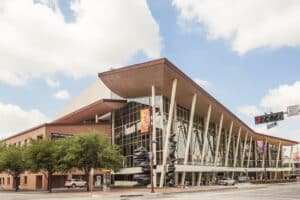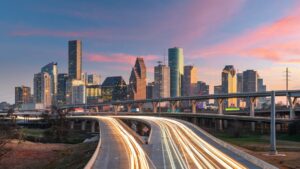What’s the future of diversity in America? Take a look at Houston today
IQ
- 3 Min Read
In order to offer transparency into how our stories are produced and to teach our readers about the importance of media literacy online, the editorial team provides a quick self-rating of the integrity of the articles and the facts presented against the following IQ metrics.
- Published on October 25, 2022
- Last Updated December 22, 2022
- In Guest Writers
How will diversity change in the future? Dr. Klineberg looks to Houston, our most diverse city, to project the United States population by ethnicity.
A walk through Houston’s popular Galleria Mall reveals a crisscross of diversity seemingly from across the globe – not surprising, considering Houstonians speak more than 140 languages and are represented by more than 90 consulates and consular corps. The metro area’s more than 10,000 restaurants serve up dishes representing more than 70 countries.
What surprises many is when it comes to the changing face of America’s diversity, the future is already here – in Houston.
“The census has a projection for what America will look like in 2050 and it’s basically the picture of Houston today,” said Dr. Stephen Klineberg, Rice University Professor of Sociology Emeritus and Founding Director of the Kinder Institute for Urban Research, a think tank that has conducted annual surveys measuring changes in Houston attitudes and demographics for the last 41 years.

“The great story of Houston is that this was, throughout all of its history, a biracial southern city dominated and controlled in an automatic, taken-for-granted way by white men,” Klineberg added. “And in the space of the last 40 years, it has become one of the most ethnically diverse cities in the country.”
According to the Kinder Institute’s 2022 survey report, census data reveal the dramatic changes in demographics. In 1960, 74% of the Houston/Harris County population was Anglo, 20% Black, 6% Hispanic, and less than half a percent Asian. Fueled mostly by exploding Hispanic and Asian growth, the 2020 statistics lead with 43% Hispanic, 28% Anglo, 19% Black and 10% Asian/Other.
During that 60-year period, the Houston/Harris County population jumped from about 1.2 to 4.7 million.
“After the oil bust of 1982, the Anglo population of Harris County stopped growing,” Klineberg said, due in part to the loss of blue-collar jobs that prevailed in the 1960s and 1970s. While the percentage of the Black population has remained steady at around 20%, the number of African-Americans increased, keeping pace with the overall population growth, due especially to African and Jamaican immigration and to middle-class African Americans migrating to Houston from mostly northern cities.
The report also highlights how the influx of minority group populations has presented new challenges with disproportionate inequality and poverty. “Education has become critical. Growing inequality, the growing gap between rich and poor, predicated above all else on access to quality education,”Klineberg said. “That’s the new reality.”
“That’s the question for Houston and the American future,” he continued. “Will we make these investments (in education) to ensure African American and Latino young people – who will be the economic forces in the 21st century – will be prepared to succeed in the global knowledge economy?”
On the upside, Houston’s diversity has encouraged “a world of thriving friendships across ethnic communities, religious beliefs, and sexual orientations,” along with increased intermarriages and cultural understanding. The report also calls upon Houston to take the lead and be a model for the nation “in building something that has never existed before in human history – a truly successful, inclusive, equitable, and united multiethnic society, comprising virtually all the peoples, all the ethnicities, all the religions of the world, gathered here, in this one remarkable place.”
“It’s the story of Houston in the 21st century, and it’s the story of America going forward,” Klineberg said.
A former Houston TV news reporter, Richard Varr is a freelance travel writer and member of the Society of American Travel Writers (SATW). He’s a frequent contributor to Porthole Cruise and Travel Magazineand the Good Sam RV Club’s Coast to Coast. Other publications include the Toronto Star, London Telegraph, Dallas Morning News, TravelWeekly.com, AAA Home & Away, Houston Woman Magazine and many others. Richard wrote the Dorling Kindersley Eyewitness Travel Guide to Philadelphia.
This story was created by Detour, a journalism brand focused on the best stories in Black travel, in partnership with McClatchy’s The Charlotte Observer and Miami Herald. Detour’s approach to travel and storytelling seeks to tell previously under-reported or ignored narratives by shifting away from the customary routes framed in Eurocentrism. The detour team is made up of an A-list of award-winning journalists, writers, historians, photographers, illustrators and filmmakers.



